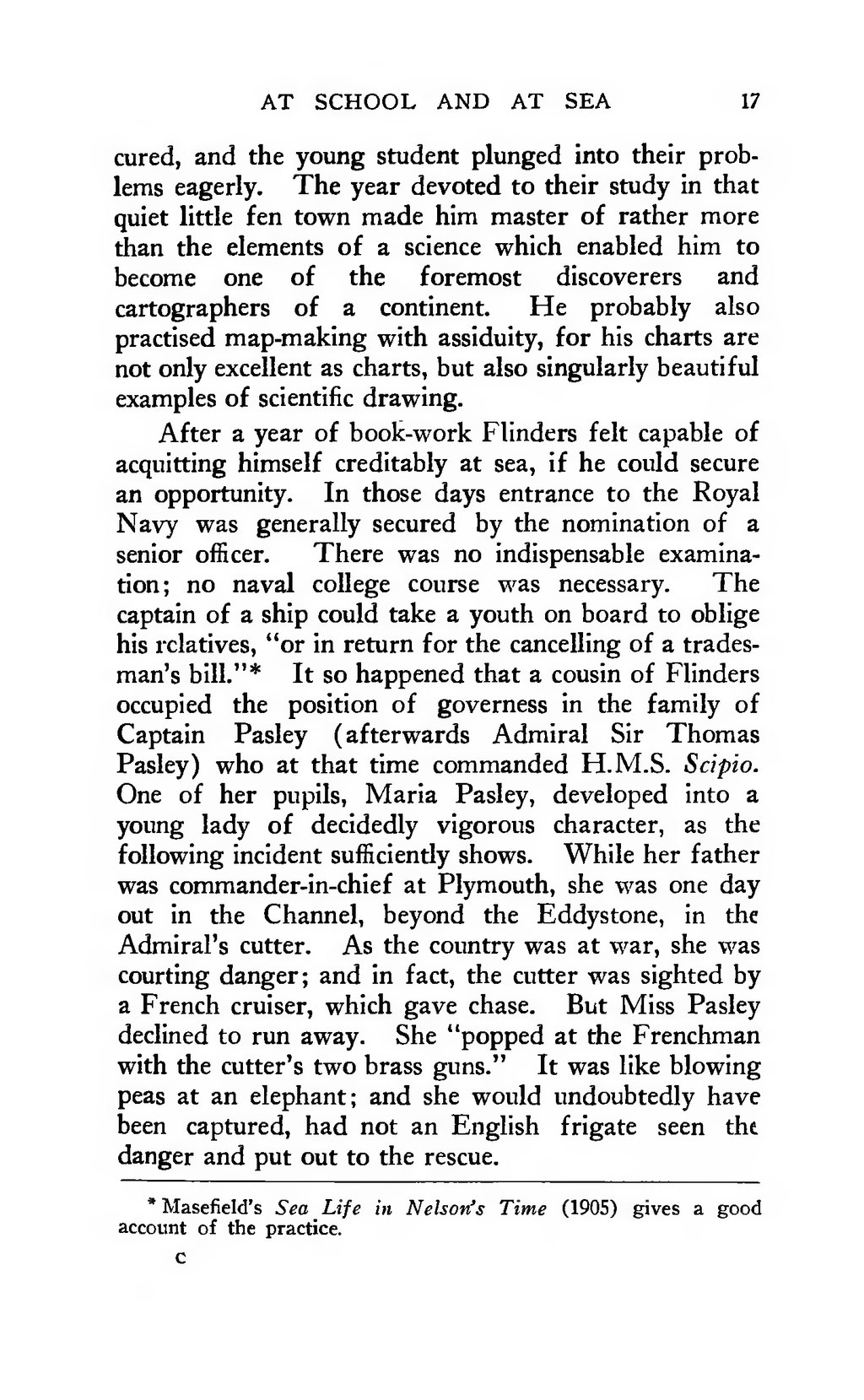and the young student plunged into their problems eagerly. The year devoted to their study in that quiet little fen town made him master of rather more than the elements of a science which enabled him to become one of the foremost discoverers and cartograhers of a continent. He probably also practised map-making with assiduity, for his charts are not only excellent as charts, but also singularly beautiful examples of scientific drawing.
After a year of book-work Flinders felt capable of acquitting himself creditably at sea, if he could secure an opportunity. In those days entrance to the Royal Navy was generally secured by the nomination of a senior officer. There was no indispensable examination; no naval college course was necessary. The captain of a ship could take a youth on board to oblige his relatives, "or in return for the cancelling of a tradesman's bill."[1] It so happened that a cousin of Flinders occupied the position of governess in the family of Captain Pasley (afterwards Admiral Sir Thomas Pasley) who at that time commanded H.M.S. Scipio. One of her pupils, Maria Pasley, developed into a young lady of decidedly vigorous character, as the following incident sufficiently shows. While her father was commander-in-chief at Plymouth, she was one day out in the Channel, beyond the Eddystone, in the Admiral's cutter. As the country was at war, she was courting danger; and in fact, the cutter was sighted by a French cruiser, which gave chase. But Miss Pasley declined to run away. She "popped at the Frenchman with the cutter's two brass guns." It was like blowing peas at an elephant; and she would undoubtedly have been captured, had not an English frigate seen the danger and put out to the rescue.
- ↑ Masefield's Sea Life in Nelson's Time (1905) gives a good account of the practice.
